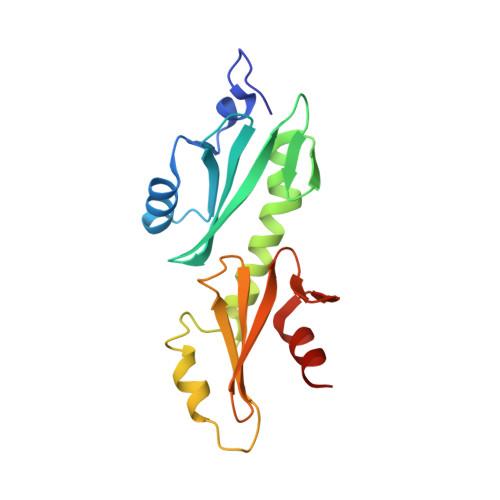Noncanonical Tandem Sh2 Enables Interaction of Elongation Factor Spt6 with RNA Polymerase II.
Diebold, M., Loeliger, E., Koch, M., Winston, F., Cavarelli, J., Romier, C.(2010) J Biol Chem 285: 38389
- PubMed: 20926373
- DOI: https://doi.org/10.1074/jbc.M110.146696
- Primary Citation of Related Structures:
2XP1 - PubMed Abstract:
Src homology 2 (SH2) domains are mostly found in multicellular organisms where they recognize phosphotyrosine-containing signaling proteins. Spt6, a conserved transcription factor and putative histone chaperone, contains a C-terminal SH2 domain conserved from yeast to human. In mammals, this SH2 domain recognizes phosphoserines rather than phosphotyrosines and is essential for the recruitment of Spt6 by elongating RNA polymerase II (RNAPII), enabling Spt6 to participate in the coupling of transcription elongation, chromatin modulation, and mRNA export. We have determined the structure of the entire Spt6 C-terminal region from Antonospora locustae, revealing the presence of two highly conserved tandem SH2 domains rather than a single SH2 domain. Although the first SH2 domain has a canonical organization, the second SH2 domain is highly noncanonical and appears to be unique in the SH2 family. However, both SH2 domains have phosphate-binding determinants. Our biochemical and genetic data demonstrate that the complete tandem, but not the individual SH2 domains, are necessary and sufficient for the interaction of Spt6 with RNAPII and are important for Spt6 function in vivo. Furthermore, our data suggest that binding of RNAPII to the Spt6 tandem SH2 is more extensive than the mere recognition of a doubly phosphorylated C-terminal domain peptide by the tandem SH2. Taken together, our results show that Spt6 interaction with RNAPII via a novel arrangement of canonical and noncanonical SH2 domains is crucial for Spt6 function in vivo.
Organizational Affiliation:
Département de Biologie et Génomique Structurales, Institut de Génétique et Biologie Moléculaire et Cellulaire, Université de Strasbourg, CNRS, INSERM, 1 rue Laurent Fries, B.P. 10142, 67404 Illkirch Cedex, France.
















